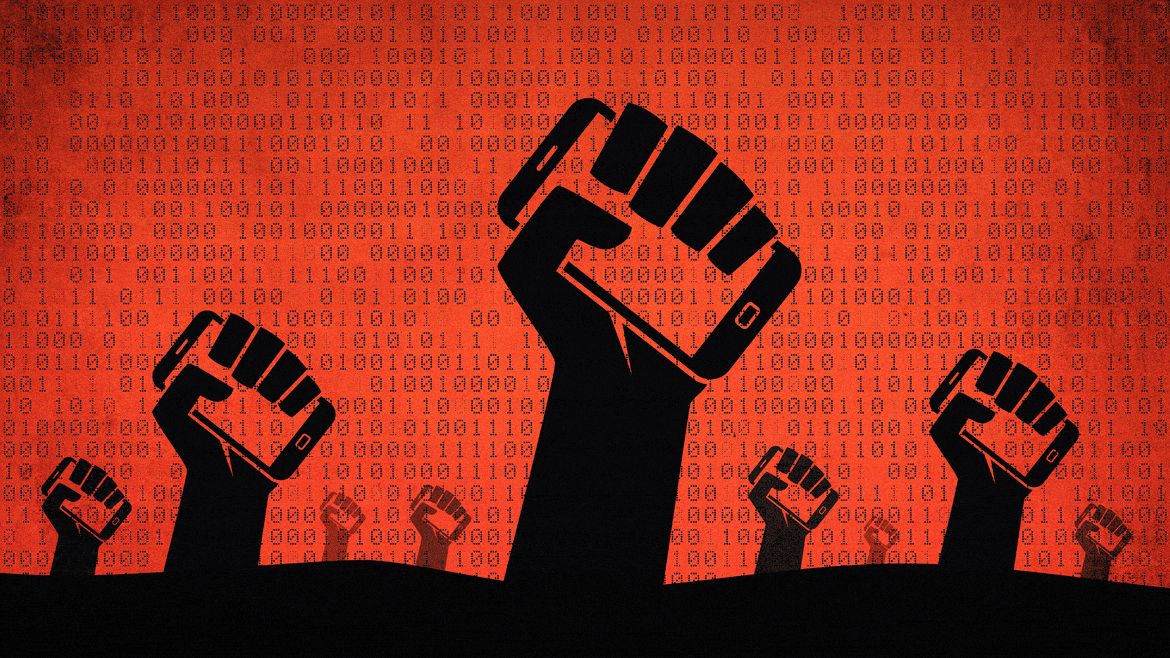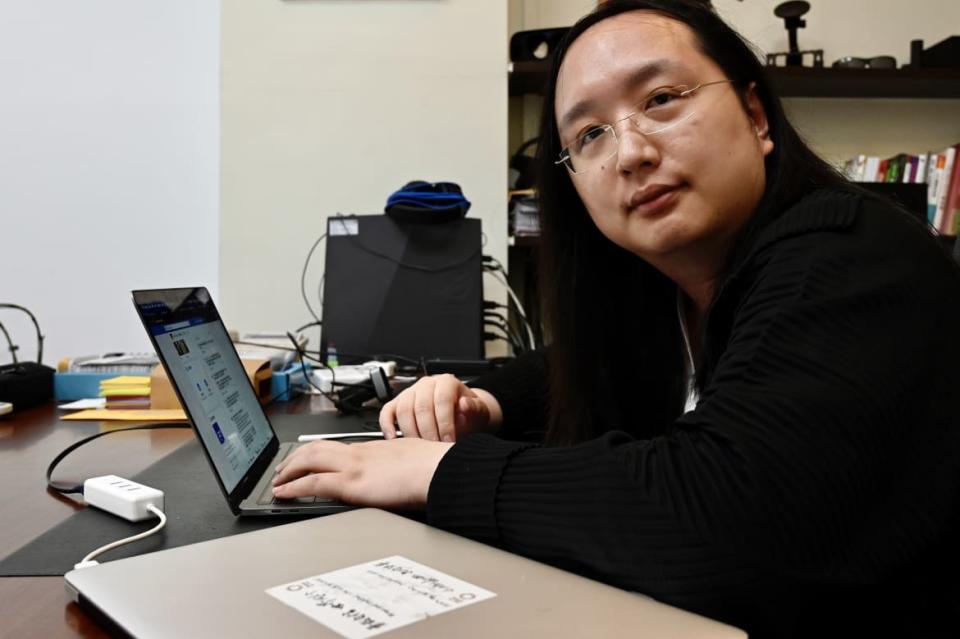Taiwan Tried to Digitize Democracy. It Was a Huge Flop

In 2014, when hundreds of student protesters occupied Taiwan’s legislature for 23 days to protest a proposed trade agreement with China, a young civic hacker named Audrey Tang helped the students livestream their protests—giving the public an ad hoc forum to debate the merits of the trade pact. The victory of Taiwan’s Sunflower Student Movement was seismic: Not only was the pact scrapped, but it showed citizens that creating and nurturing civic spaces could bring participatory democracy down to the grassroots while also bringing it online.
In the wake of the protests, Tang and a group of civic hackers involved in the movement called g0v (pronounced gov-zero) launched vTaiwan, an online discussion platform that solicits public comment on policy issues. (To facilitate this, the platform uses a surveying tool called Pol.is, which maps opinions and draws participants toward finding a consensus.) After Tang joined the government in 2016 as Taiwan’s first digital minister, vTaiwan was used to make dozens of policy recommendations such as regulating online alcohol sales and resolving an impasse between Uber and taxi drivers.
At first, it appeared to be a promising weapon against the polarized, engagement-driven infrastructure of the modern internet, used to “track the root and derive shared wisdom from flame wars, turning flame wars into co-creation,” Tang said in a September speech at the Concordia Summit.
That’s a noble goal for a country: harnessing the worst aspects of the internet to create a space for consensus and creation. It also became a perfect test case for digital democracy—a term that describes many things but, at its most utopian, are digital tools that help people actively engage in governance, whether by voting or by hands-on participatory platforms like vTaiwan.

Taiwan's digital minister Audrey Tang helped launch vTaiwan, an online discussion platform that solicits public comment on policy issues, in 2014.
During the outbreak of COVID-19, Tang built off of the digital momentum by helping create an online map for citizens to locate facemasks, which played a role in Taiwan’s remarkably successful pandemic response. News articles breathlessly heaped praise on the country’s democratic vibrancy, often citing its groundbreaking foray into digital democracy with vTaiwan.
But in reality, the momentum of vTaiwan—and of the country’s digital participation revolution—had fizzled out years earlier. The platform hasn’t been used for any major decisions since 2018, as it was seen as difficult to use and people lost interest, vTaiwan co-creator and former Taiwanese legislator Jason Hsu told The Daily Beast. Since the government is not mandated to adopt recommendations coming from vTaiwan, “legislators don’t take it seriously.”
Taiwan unwittingly tested the early limits of digital democracy’s potential to create meaningful, lasting participatory spaces, which are challenged today by the rise of AI and the chokehold of tech giants over so much of the internet. While it held promise, it showed that, sometimes, humans just seem to get along better once they log off. “I’ll always lament the demise of vTaiwan,” Hsu added. “It could have been more effective.”
Taiwan’s digital democracy experiment drew from a pool of global success stories ranging from electronic voting in Switzerland to participatory budgeting in Porto Alegre, Brazil. The latter started as a series of offline discussions in the 1990s allowing citizens to give input into budget decisions, such as increasing public investment in health and sanitation. It went online in the 2000s, and hundreds of global imitators followed.
“It’s a process where the government is willing to respond,” Tiago Peixoto, a governance specialist at the World Bank and proponent of online participatory democracy, told The Daily Beast. “When you add technology to that, you can make the process more inclusive.”
While the internet has allowed far more citizens to participate in democracy, it comes with a downside. “Technology made it extremely easy for any government to put something out there and ask citizens,” he explained. “But it didn’t make it easier for governments to be able to respond.”
In other words, governments can more easily canvas public opinion—but it’s as difficult as always to implement changes, especially as they reach a more diverse pool of viewpoints than ever before. “It increased the gap between citizen voice and citizen response,” Peixoto said. “Sometimes, the citizens say what they want, but it isn’t what the governments want to hear.”
Congress Is Blowing It When It Comes to AI Regulation
As a result, democratic platforms backed by governments often end up “cherry-picking” issues it already knows how to deal with, Peixoto said, giving digital democracy initiatives a sense of encouraging “tokenistic participation.” For instance, vTaiwan has been limited by the government to only be used for issues concerning the digital space, like online liquor regulation and revenge porn laws.
Instead of expanding the platform, the government launched a parallel platform called Join to solicit comments on other issues; local municipalities use it to float ideas such as changing school hours or constructing public tennis courts. But the introduction of Join only confused people and “made vTaiwan redundant,” Hsu said.
Digital tools also had huge potential in Taiwan to counter online disinformation coming from China. Cofacts, a famous fact-checking bot developed by g0v, can be used on the popular LINE social messaging app to instantly access crowdsourced verifications on whether news is legitimate.
However, much like vTaiwan, Cofacts was never embraced by the government as a key tool in its fight against disinformation, as legislators preferred tougher approaches that galvanized supporters. For example, ahead of Taiwan’s 2020 presidential election, legislators advocated for fines and other punitive measures against citizens accused of distributing disinformation, drawing criticism from global press freedom groups, such as Reporters Without Borders and the Committee to Protect Journalists.
How Social Media Just Saved Democracy
Participatory democracy, both online and offline, has also often met resistance or stagnation. In Brazil the practice has declined in popularity after peaking in the 2000s. “There was resistance from officials who didn’t want to cede power to people, or found setting up the process to be challenging,” Brazilian Senator Humberto Costa wrote earlier this year. Hsu gave a similar warning: Legislators are unlikely to adopt participatory initiatives themselves, which they see as taking away their own power.
The rise of AI adds even more concerns to a space already threatened by malicious hacking and cyberattacks. If left unregulated, generative AI could push participants toward certain outcomes or be used to disrupt consensus building. For example, there could be a chatbot used to inform public opinion about a controversial piece of policy like abortion rights or book banning.
But it also has potential to assist in “devising better strategies to make government more responsive,” Peixoto said. Peixoto is part of a team using OpenAI to sift through climate data and give governments recommendations on what they can do better.
But there are firm limits to the potential digital democracy, just as there are to the digital world at large. When vTaiwan took on the dispute between Uber and Taiwan’s taxis, some drivers felt marginalized because they were less comfortable using the digital tools, Hsu said. Sometimes, there’s no substitute to engaging offline.
“You need face-to-face communication, to really sit down and talk,” Hsu said. “Some things just cannot be translated online.”
Get the Daily Beast's biggest scoops and scandals delivered right to your inbox. Sign up now.
Stay informed and gain unlimited access to the Daily Beast's unmatched reporting. Subscribe now.

 Yahoo News
Yahoo News 
